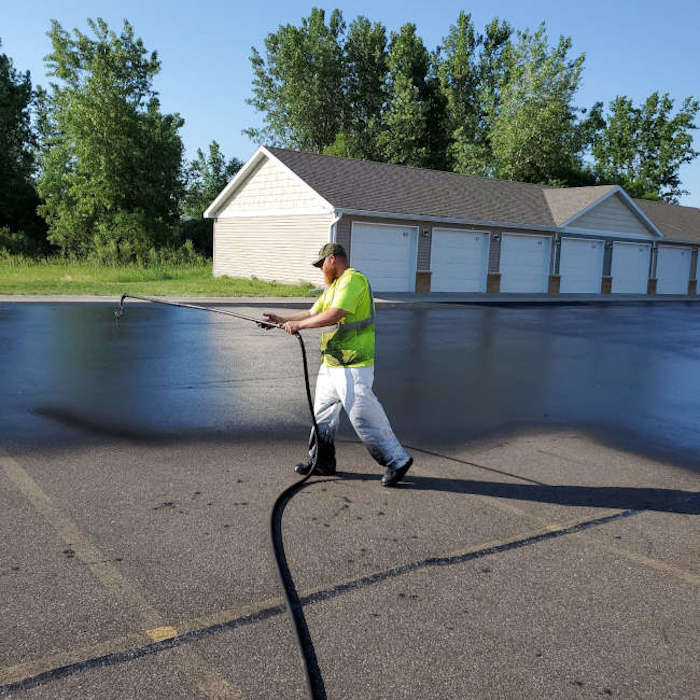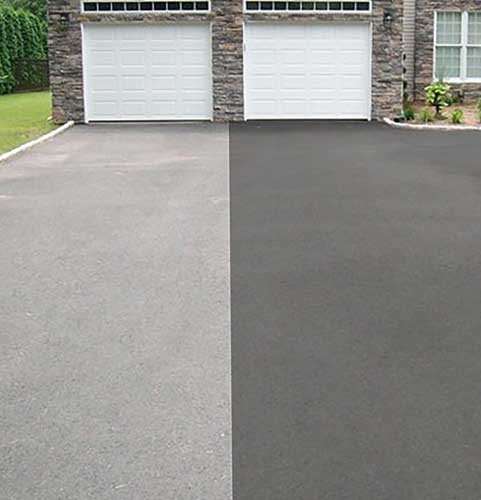Change Your Building's Aesthetics: Commercial Car Park Paving and Asphalt Sealing Solutions
Change Your Building's Aesthetics: Commercial Car Park Paving and Asphalt Sealing Solutions
Blog Article
Hot Mix Asphalt: A Sustainable Service for Pavement
Hot Mix Asphalt (HMA) has become a leading lasting selection for sidewalk remedies, using a myriad of ecological advantages and cutting-edge innovations. Its capability to minimize and reuse materials power consumption offers a compelling situation for its fostering in roadway building and construction projects. The lasting efficiency and toughness of HMA make it a favored choice for facilities growth. As the need for environmentally friendly building and construction practices expands, checking out the subtleties of HMA's sustainability can offer useful insights right into the future of pavement options.
Ecological Benefits of Warm Mix Asphalt

Additionally, Warm Mix Asphalt helps to alleviate urban warm island effects. Its dark color soaks up sunlight, reducing the amount of warmth reflected back right into the ambience compared to lighter-colored sidewalks. This can decrease ambient temperatures in metropolitan locations, reducing the need for air conditioning and eventually reducing energy intake.
Additionally, Warm Mix Asphalt contributes to enhanced stormwater monitoring. Its permeable nature permits water to recharge and infiltrate the sidewalk groundwater products, lowering runoff and the risk of flooding. These environmental benefits make Hot Mix Asphalt a sustainable choice for paving roads and highways.
Energy Efficiency in HMA Production
Is energy effectiveness an important variable in the manufacturing of Warm Mix Asphalt (HMA)? Definitely. Power plays a substantial duty in the manufacturing of HMA, influencing both cost and environmental sustainability. One key facet of energy efficiency in HMA manufacturing is using warm mix asphalt (WMA) modern technologies (regrading). WMA permits the blending and placement of asphalt at lower temperatures contrasted to typical warm mix asphalt, leading to decreased energy consumption throughout manufacturing. This process not only lowers gas usage however also decreases greenhouse gas exhausts, making it a much more eco-friendly alternative.
In addition, innovations in plant innovations have brought about more energy-efficient HMA production procedures. Modern plants are designed with attributes like recycled asphalt pavement (RAP) processing capacities, efficient heater systems, and improved insulation, all adding to energy cost savings. By enhancing power usage in HMA manufacturing, the industry can lower its carbon footprint while keeping premium sidewalk materials. Power efficiency is, as a result, an essential factor to consider in ensuring the sustainability of Warm Mix Asphalt manufacturing.
Recyclability of Hot Mix Asphalt
The recyclability of Hot Mix Asphalt (HMA) is a pivotal element of its sustainability and lasting environmental effect. HMA is just one of one of the most recycled materials in the United States, with over 100 million lots of reclaimed asphalt pavement (RAP) being reused every year in brand-new sidewalk construction. Recycling HMA uses numerous ecological advantages, such as reducing the need for virgin materials, reducing power intake throughout manufacturing, and lowering the quantity of waste sent out to land fills.
The process of reusing HMA includes milling the existing pavement, crushing it home into smaller items, and blending it with new aggregate and asphalt binder to develop a recycled mix. Generally, the recyclability of HMA plays a substantial function in promoting lasting methods within the pavement market.

Long-Term Efficiency of HMA
Asphalt sidewalks show durability and resilience over a prolonged period, showing the long-lasting efficiency of Hot Mix Asphalt (HMA) The durability of HMA can be credited to its capability to hold up against hefty traffic loads, harsh weather, and the effects of aging. Studies have shown that well-designed and correctly constructed HMA pavements can last for twenty years or more with regular maintenance. The key to optimizing the lasting efficiency of HMA depends on using high-grade materials, following ideal methods in building, and executing effective upkeep methods. Appropriate drainage, regular assessments, and prompt repair services are necessary for protecting the structural honesty of HMA pavements over time. In addition, improvements in HMA technology, such as the use of polymer-modified binders and cozy mix asphalt, have better improved the resilience and long life of HMA pavements. By focusing on high quality construction and upkeep practices, HMA proceeds to show itself as a cost-effective and lasting solution for resilient pavement facilities.

HMA: Toughness and Sustainability
Demonstrating both durability and sustainability, Warm Mix investigate this site Asphalt (HMA) has come to be a foundation in the building and construction of resilient pavement facilities - hot mix asphalt. HMA's longevity stems from its capacity to endure hefty tons, severe climate condition, and high web traffic volumes, making it a reputable selection for streets, freeways, and airport runways. The make-up of HMA, which commonly includes aggregates, binder, and filler, plays an essential duty in improving its long life and resistance to tear and put on
In addition, HMA's sustainability depends on its recyclability and energy-efficient production procedure. The ability to recycle recovered asphalt pavement (RAP) in new HMA mixes reduces the demand for virgin products and decreases the environmental influence of pavement building and upkeep. In addition, the energy efficiency of creating HMA exists in its reduced mixing temperature levels contrasted to various other sidewalk products, resulting in minimized power intake and greenhouse gas exhausts.
Conclusion
Finally, warm mix asphalt (HMA) supplies a lasting solution for sidewalk with its environmentally pleasant characteristics. HMA's recyclability, energy efficiency in production, and long-term toughness make it an eco-friendly choice for road construction. By conserving natural deposits, reducing waste, and decreasing greenhouse gas discharges, HMA plays a critical duty in advertising sustainability in facilities advancement. Its ability to mitigate city warmth island results additionally highlights its significance in creating ecologically aware and resistant sidewalk systems.
HMA is one of the most recycled products in the United States, with over 100 million from this source lots of reclaimed asphalt pavement (RAP) being recycled each year in brand-new pavement building.The procedure of reusing HMA involves crushing the existing pavement, squashing it into smaller sized pieces, and blending it with new accumulation and asphalt binder to create a recycled mix.Asphalt sidewalks demonstrate longevity and durability over an extensive period, mirroring the long-lasting efficiency of Hot Mix Asphalt (HMA) Furthermore, advancements in HMA modern technology, such as the use of polymer-modified binders and warm mix asphalt, have actually even more boosted the resilience and long life of HMA pavements. The capability to recycle reclaimed asphalt pavement (RAP) in brand-new HMA combinations decreases the need for virgin products and reduces the ecological influence of pavement building and upkeep.
Report this page